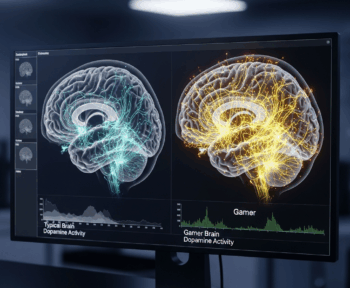Cloud gaming represents the most significant paradigm shift in how we consume interactive entertainment since the transition from arcades to home consoles. The convergence of WebRTC technology and 5G networks has created an unprecedented opportunity to democratize high-end gaming experiences, making AAA titles accessible to billions of users who previously couldn’t afford expensive gaming hardware1.
The Technology Revolution Behind Cloud Gaming
WebRTC (Web Real-Time Communication) has emerged as the backbone technology enabling seamless game streaming directly through web browsers. This peer-to-peer protocol, originally designed for video conferencing, has been ingeniously adapted to handle the complex requirements of interactive gaming. Unlike traditional streaming methods that introduce significant latency, WebRTC enables sub-60ms response times, making competitive gaming viable even on cloud platforms.
The implementation of WebRTC in gaming platforms eliminates the need for proprietary plugins or software installations. Players can instantly access games through any modern browser, whether they’re using Chrome, Firefox, Safari, or Edge. This browser-based approach means that a Chromebook user can theoretically enjoy the same gaming experience as someone with a high-end gaming PC, provided they have adequate internet connectivity.
5G Networks: The Game Changer
Fifth-generation wireless technology delivers theoretical speeds up to 10Gbps with latency as low as 1 millisecond, fundamentally transforming what’s possible with cloud gaming. These specifications aren’t just incremental improvements over 4G; they represent a quantum leap that makes cloud gaming indistinguishable from local hardware gaming for most users.
In practical terms, 5G enables 4K gaming at 60fps with HDR support on mobile devices, something that was technically impossible just five years ago. Major telecommunications providers have partnered with gaming companies to create dedicated gaming lanes on their 5G networks, ensuring consistent quality of service even during peak usage hours. Verizon’s partnership with Microsoft for Xbox cloud gaming and AT&T’s collaboration with Google Stadia (before its closure) demonstrate the telecommunications industry’s commitment to gaming as a killer application for 5G adoption.
Breaking Down Hardware Barriers
The democratization effect of cloud gaming cannot be overstated. In emerging markets where a PlayStation 5 or Xbox Series X might cost several months’ wages, cloud gaming offers access to the same games for the price of a monthly subscription. This economic accessibility has opened up entirely new markets for game developers and publishers.
Consider the impact in regions like Southeast Asia, Latin America, and Africa, where smartphone penetration far exceeds console ownership. Cloud gaming transforms these ubiquitous devices into powerful gaming machines, capable of running titles like Cyberpunk 2077 or Fortnite that would typically require dedicated gaming hardware2. This shift has prompted major publishers to rethink their distribution strategies, with many now prioritizing cloud-first releases for certain markets.
Platform Competition and Innovation
The cloud gaming space has become increasingly competitive, with major technology companies vying for dominance. Microsoft’s Xbox Cloud Gaming, integrated into Game Pass Ultimate, offers access to hundreds of titles without downloads or installations. NVIDIA’s GeForce NOW takes a different approach, allowing users to play games they already own on platforms like Steam, essentially providing the hardware while users bring their own games2.
Amazon Luna has carved out its niche by integrating with Twitch, allowing streamers to invite viewers to instantly join their games without owning the title. This social gaming approach represents a new model that wouldn’t be possible without cloud infrastructure. Meanwhile, PlayStation Now has evolved into PlayStation Plus Premium, offering both streaming and downloadable options for maximum flexibility.
Technical Challenges and Solutions
Despite remarkable progress, cloud gaming still faces technical hurdles. Input lag remains the primary concern for competitive gamers, particularly in fast-paced genres like fighting games or first-person shooters. However, innovative solutions are emerging. Predictive input algorithms use machine learning to anticipate player actions, effectively masking latency by pre-rendering likely outcomes.
Adaptive streaming technology dynamically adjusts video quality based on network conditions, prioritizing responsiveness over visual fidelity when necessary. This ensures playable experiences even on unstable connections, though the visual quality may fluctuate. Some platforms have implemented split rendering, where latency-sensitive elements like UI and character movements are rendered locally while complex environmental graphics are streamed from the cloud.
The Mobile Gaming Revolution
Mobile devices have become the primary beneficiaries of cloud gaming technology. With mobile gaming projected to generate $116 billion by 2025, cloud technology allows mobile platforms to host experiences previously exclusive to consoles and PCs. Touch control schemes have been reimagined for traditionally controller-based games, with customizable overlays and gesture controls making complex games playable on touchscreens.
The integration of cloud gaming into mobile operating systems has been seamless. Both iOS and Android now support external controllers natively, transforming phones into portable consoles when paired with cloud gaming services. Foldable phones with larger screens have found a killer application in cloud gaming, offering tablet-sized gaming experiences in pocketable form factors.
Infrastructure Development and Investment
The success of cloud gaming depends heavily on infrastructure development. Content delivery networks (CDNs) are being expanded globally, with edge computing nodes placed closer to end users to reduce latency. Microsoft alone has invested billions in Azure data centers specifically optimized for gaming workloads, with specialized hardware including custom compression chips and AI accelerators.
Internet service providers are upgrading their networks to support the bandwidth demands of cloud gaming. Fiber optic deployments have accelerated, and even satellite internet providers like Starlink are optimizing their services for gaming traffic. These infrastructure improvements benefit not just gaming but all real-time applications, creating positive externalities for the broader digital economy.
The Future Landscape
Looking ahead, cloud gaming will likely coexist with traditional gaming rather than completely replacing it. Hybrid models are emerging where games can seamlessly transition between local and cloud execution. A player might start a game on their console at home, continue on their phone during lunch break via cloud streaming, and return to local play in the evening.
The integration of AI into cloud gaming platforms will enable unprecedented personalization. Difficulty levels could adjust in real-time based on player skill, NPCs could have genuinely unique personalities powered by language models, and game worlds could be procedurally generated to match individual preferences. These computationally intensive features are only possible with cloud infrastructure.
Virtual reality and augmented reality gaming will particularly benefit from cloud computing. The processing power required for photorealistic VR experiences exceeds what portable headsets can deliver, making cloud rendering essential for the next generation of immersive gaming. With 5G and eventually 6G networks, wireless VR headsets will stream high-fidelity experiences without the need for expensive local hardware.





